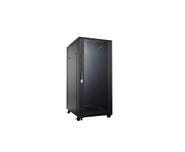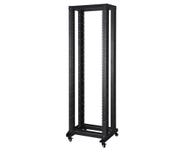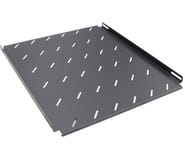

Server Racks Buying Guide
Selecting a server rack can be difficult, with many factors to consider before you’re ready to make a purchase for your client or workplace. Before you’re ready to select a server rack, you will need to know how much active equipment and cabling you will need to house in the rack. This will determine the type and size of rack best suited to your application.
Here are some things to consider before buying server racks. First of all, you need to know what a server rack is.
What are server racks?
A server rack is a free-standing cabinet designed to contain network equipment, such as servers, routers, switches, and associated cabling. The rack enables the secure storage of your equipment in a single location.
The Number of Rack Units You Need:
A rack unit is a term used to determine the height and available space for equipment and racks themselves. Server racks have vertical mounting rails with pre-punched mounting holes equally spaced for each rack unit. A rack unit is 44.45mm in height. The number of rack units you need will depend upon the active equipment and cabling the rack will need to hold.
As a general guideline, add 10 percent more rack units than your initial estimate, because rack units cannot be added once you have purchased your server cabinet. This allows for future expansion and growth of the network.
Dimensions and Fit:
Server racks vary greatly in height, width, and depth. Ensure the room housing the server rack allows for these dimensions. All free-standing racks are 19” wide between the mounting holes, to allow standard equipment to mount directly into the rack. The important factors then become the height (in rack units), the width to allow for cable management beside the servers and cabling, and the depth, which usually relates to the size of the server being installed.
Server Rack Location:
Two main determining factors when choosing a location for your server rack are power and cooling. Generally, servers generate a lot of heat and require adequate ventilation and air-conditioning to keep them running smoothly.
You should have a dedicated power line feeding each server rack, and the location should be close to where the main power source is located.
Additionally, it is a good idea to make sure the server rack location is in a low-traffic area and lockable to prevent unauthorized access.
Space:
For smaller networks, not requiring a large amount of active equipment, you may consider a wall-mounted cabinet. These provide the same features but take up much less space and do not require a dedicated room. For confined spaces, a swing frame design provides access to the back of the equipment.
Functional Requirements and Aesthetics:
There are aesthetic and functional components that will help you get the most out of your server rack. For instance, proper management of a server requires good power, cooling, and cabling distribution.
Determine the power required in relation to the server and other active equipment to be house by the server rack to decide what power distribution unit your rack or cabinet requires. Proper airflow is also important, so your servers run effectively. This can be provided by fan-units in the rack itself that improve air-flow and are usually mounted on the top of the rack.
Also consider the type of front door you will need – options include solid glass, Perspex or perforated steel. This choice will impact the airflow within your rack, so your specific installation environment will determine which door you need.
Blank panels cover unused space and are often used to assist with airflow and give the rack a neater appearance and improve functionality.
These considerations will help you begin choosing your server rack. Consult the manufacturers datasheet for more in-depth information to ensure you select a server rack that meets your needs today and in the future.



















